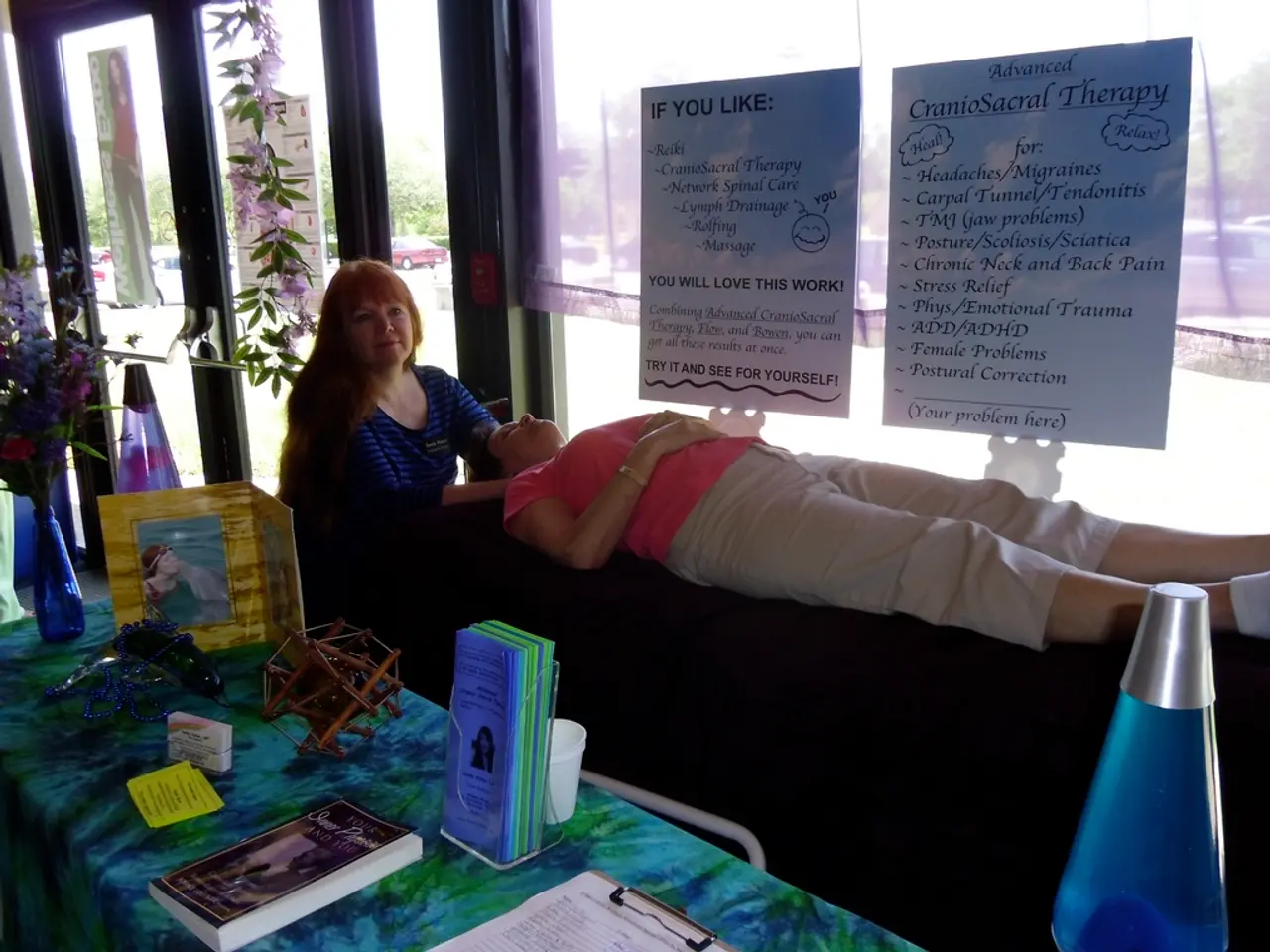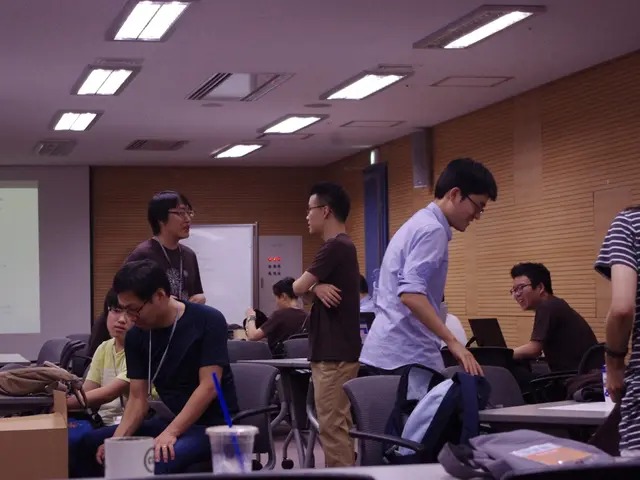Treatment of Widespread Anxiety Over Distance: Unrestricted Study on Cognitive Behavioral Therapy
A new study has found that brief videoconference-delivered cognitive behavioral therapy (VCBT) is an acceptable and satisfactory treatment for patients with Generalized Anxiety Disorder (GAD). The research, which compared brief VCBT with standard length VCBT and in-person CBT, indicates that videoconference-based therapies can be effective in reducing symptoms of anxiety.
The study, which included 36 participants with GAD, found that brief VCBT resulted in substantial and durable improvements in GAD symptoms. At post-treatment, 79.2% of participants no longer met GAD diagnostic criteria, increasing to 87% at the 3-month follow-up. The brief VCBT intervention consisted of 5 weekly 50-minute sessions of manualized therapy.
While there is growing evidence supporting the efficacy of brief VCBT, more research is needed to fully understand its effectiveness compared to standard length VCBT and in-person CBT. Trials directly comparing brief and standard protocols would help elucidate the incremental benefits of additional sessions.
The study provides promising initial evidence for brief VCBT as an accessible, effective treatment approach for GAD. Participants were assessed using various measures, including the Generalized Anxiety Disorder Questionnaire-7 item (GAD-7), the Generalized Anxiety Disorder Dimensional Scale (GAD-D), and the Penn State Worry Questionnaire-3 item (PSWQ-3).
Participants were predominantly female and well-educated, limiting generalizability to more diverse populations. However, the sample was highly satisfied with the treatment, with 92% reporting it was worth their time. The improvements in GAD symptoms were found with large effect sizes, comparable to lengthier VCBT and in-person CBT treatments.
While the study showed promising results, it had several methodological limitations, including a lack of a control group, high dropout rate, and missing post-treatment and follow-up data for sizable subsets. Engagement issues and attrition also bear monitoring in remote therapy.
Future research should explore for whom brief VCBT is sufficient versus better positioned as part of a stepped-care approach. Examining predictors of response, mechanisms of change, and system-level implementation are other key directions for advancing brief VCBT as an accessible, evidence-based option for the millions affected by impairing GAD.
The current state of research on the efficacy of brief VCBT for GAD is evolving, with several studies indicating that videoconference-based therapies can be effective. Standard length VCBT has been shown to be effective in treating GAD, with studies indicating its benefits in reducing symptoms of anxiety. It offers a structured approach similar to in-person CBT but with the flexibility of remote delivery. Some studies suggest that VCBT can be as effective as in-person CBT, providing a convenient alternative for those who prefer remote therapy or face barriers to in-person sessions.
In-person CBT is well-established as an effective treatment for GAD, with a strong evidence base supporting its use. It allows for immediate feedback and interaction between therapist and patient, which can be beneficial for some patients. However, it requires physical presence, which may not be feasible or preferred by all individuals.
In summary, while brief VCBT shows promise, more research is required to fully understand its effectiveness compared to standard length VCBT and in-person CBT. Existing studies suggest that VCBT can be a viable option for treating GAD, offering flexibility and accessibility without compromising efficacy. The study highlights potential need for a stepped-care approach where initial non-responders receive further treatment.
- The acceptance and satisfaction of brief videoconference-delivered cognitive behavioral therapy (VCBT) as a treatment for Generalized Anxiety Disorder (GAD) is demonstrated in a new study.
- The research, which examined brief VCBT compared to standard length VCBT and in-person CBT, reveals that videoconference-based therapies can reduce symptoms of anxiety.
- In the study, 79.2% of participants no longer met GAD diagnostic criteria after brief VCBT, increasing to 87% at the 3-month follow-up.
- After the brief VCBT intervention consisting of 5 weekly sessions, substantial and durable improvements in GAD symptoms were observed.
- More research is needed to determine the effectiveness of brief VCBT compared to standard length VCBT and in-person CBT, particularly through trials directly comparing the protocols.
- The study utilizes various measures including the Generalized Anxiety Disorder Questionnaire-7 item (GAD-7), the Generalized Anxiety Disorder Dimensional Scale (GAD-D), and the Penn State Worry Questionnaire-3 item (PSWQ-3) for assessment.
- Participants were predominantly female and well-educated, limiting generalizability to more diverse populations, yet they were highly satisfied with the treatment.
- Critical thinking about the study's methodological limitations is crucial, as it lacked a control group, had a high dropout rate, and missing post-treatment and follow-up data for a significant number of participants.9.Future research should investigate appropriate application of brief VCBT, factors influencing response, mechanisms of change, and system-level implementation to advance it as an accessible, evidence-based treatment option.
- An evolving body of research indicates the effectiveness of brief VCBT for GAD, which offers a structured approach similar to in-person CBT but with the added benefit of remote delivery.
- In-person CBT, well-established as an effective treatment for GAD, requires physical presence, which may not be feasible or preferred by all individuals.
- The study underscores the potential need for a stepped-care approach, where initial non-responders receive further treatment, to fully address GAD and enhance mental health and wellness through various psychology therapies and treatments.








